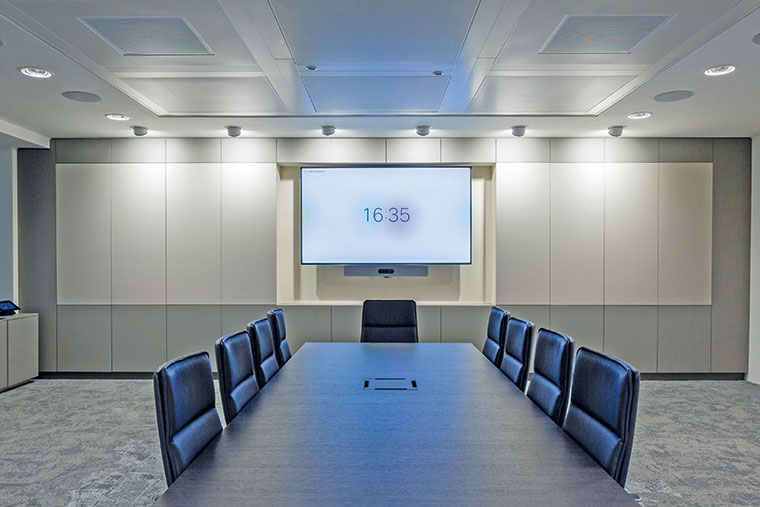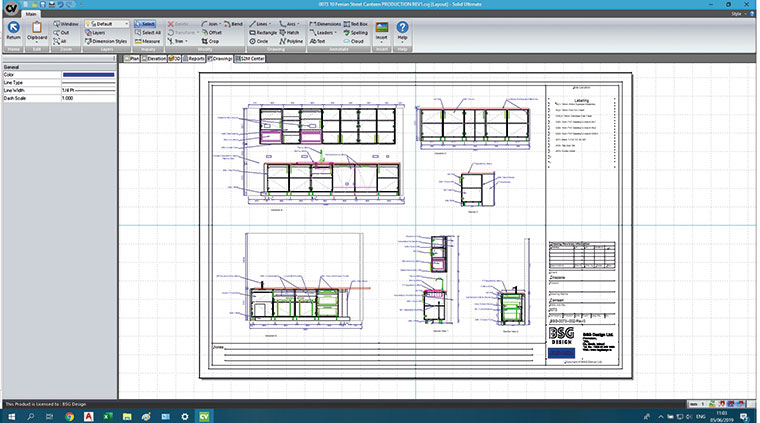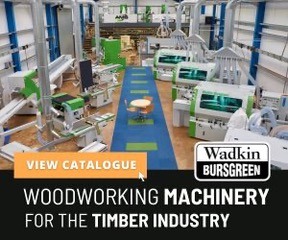An award-winning Irish furniture manufacturer producing quality, bespoke joinery, kitchens and furniture for high end office fitouts, says introducing Cabinet Vision and Alphacam into its company, completely changed its business model.
BSG Design was founded by brothers Barry and Stephen Goulding, at Trim, County Meath, in 2013. Three years later they reached the final of Ireland’s Best Young Entrepreneur, and in 2017 won the Meath Best Small to Medium Enterprise and Overall Best Business.
Barry attributes their success to attention to detail in their design and planning, and short project timescales. “Using Alphacam and Cabinet Vision has pretty much doubled the size of the business by improving efficiency in the production processes.”
The majority of their work is bespoke high-end office and kitchen fitouts including reception counters, wall panelling and tea stations for prestigious customers such as PayPal, IBM, Ernst & Young, Irish Life, Northern Trust Bank, and Gourmet Food Parlour, with the remainder being domestic kitchens and cabinetry.

Prior to investing in its four-axis SCM Pratix CNC nesting machine, the company operated with a panel saw, but now 70% of their work goes through Cabinet Vision, and 30% through Alphacam, with an overlap of around 20% of jobs being handled by both.
Barry first used the software while studying at the GMIT Letterfrack College in Ireland for his Design and Manufacture qualification and Furniture Design degree. “After graduating, I worked in the industry for around 10 years, for furniture companies, and could see how much more efficient they’d be if they used Cabinet Vision and Alphacam.”
So, when he started his own company, it was always the plan that CNC machinery and the CAD/CAM software would be introduced. He now carries out CAD drawings and 3D renders in Cabinet Vision, and uses its powerful Screen to Machine tool to communicate all the engineering data directly to the Pratix.
A number of bespoke programs to manage aspects such as Keku clips and locks have been set up via the software’s User Created Standards (USCs).
“These bespoke USCs write specific code for us to enable the software to do exactly what we need for particular individual tasks.”
And, as BSG manufacture cabinets to suit customer requirements, they use the software to set different construction methods. “For example, we may be working on an inframe unit, and the next job could be a slab door with a chamfer back handle detail and a checkout in the carcass for the handle rail. Or switching between rafix and dowel jointing, as details vary from project to project. So it’s invaluable to be able to vary the construction methods on how each item is made, quickly and simply.”

Barry describes how BSG originally used 2D software for its panel saw, and that ‘huge’ time savings have now been achieved by drawing a 3D model in Cabinet Vision, as all the toolpaths for the CNC are generated automatically.
“Screen to Machine sends accurate NC code for everything we’ve put on the model, out to the machine tool. For example, if we put drawers or any cabinet fittings on the model, all the mounting holes are machined in the various positions correctly, without us having to do anything else.”
Barry says with Cabinet Vision taking care of standard shaped cabinets, it was a natural progression for the company to bring in Alphacam to tackle more complex components such as curved reception counters, and other items that could not be cut with Cabinet Vision.
The two software brands from the Production Software stable of Hexagon Manufacturing Intelligence have played a major contribution in overcoming BSG’s biggest challenge, which was meeting the extremely short deadlines required from customers. “Basically, once the CAD drawings are done and approved, we’re almost there, because getting the CNC program, the saw cutlist, assembly sheets and labels with manufacturing information from the 3D model is very fast.”
While they tender to main contractors, they are often recommended by architects and interior designers, who are impressed with their speed, efficiency and the high quality product finish.
“Once we’ve tendered we get a set of drawings, usually as a PDF, and build our Alphacam and Cabinet Vision designs from those. Those original drawings from the client usually just show a general design idea and we need to incorporate accurate measurements and technical details for our own production, and for other trades such as plumbing and electrical,” says Barry.
BSG’s designs regularly must take into account items which are not found in standard kitchens, such as large commercial fridges and commercial coffee machines.
“And we frequently have to begin manufacture before walls are even built, to keep within the project timeline. Therefore, we often agree measurements with the contractor without going on site to get drawings approved, and then change the dimensions again just before production. But it’s so easy to modify the Cabinet Vision models by dragging and dropping them, and changing their dimensions, so that the final NC code produces perfectly accurate cabinets for the room.”
In conclusion, Barry says the software has also enabled BSG to implement a degree of lean manufacturing within the company, which has helped change its business model.
“We saw considerable benefits as soon as we started using Cabinet Vision,” says Barry. “As it creates each bespoke NC file from the CAD model in the office, there is a lot less downtime on the Pratix, as the manual input has been greatly reduced.
“These efficiencies have made the process considerably faster. And the way parts are presented has improved with labelling from Cabinet Vision’s Label-IT, which means that nothing is forgotten once it has been inputted into the model. Anyone in the workshop can see a complete overview of the job.
“The manufacturing booklet created in Cabinet Vision shows what’s required for each project,” says Barry, “and the labels ensure an accurate flow of information from the office to the workshop, and finally for the fitters on site to see everything that’s required for the installation, even down to the number of hinges and handles, and that all the fittings are there.”








